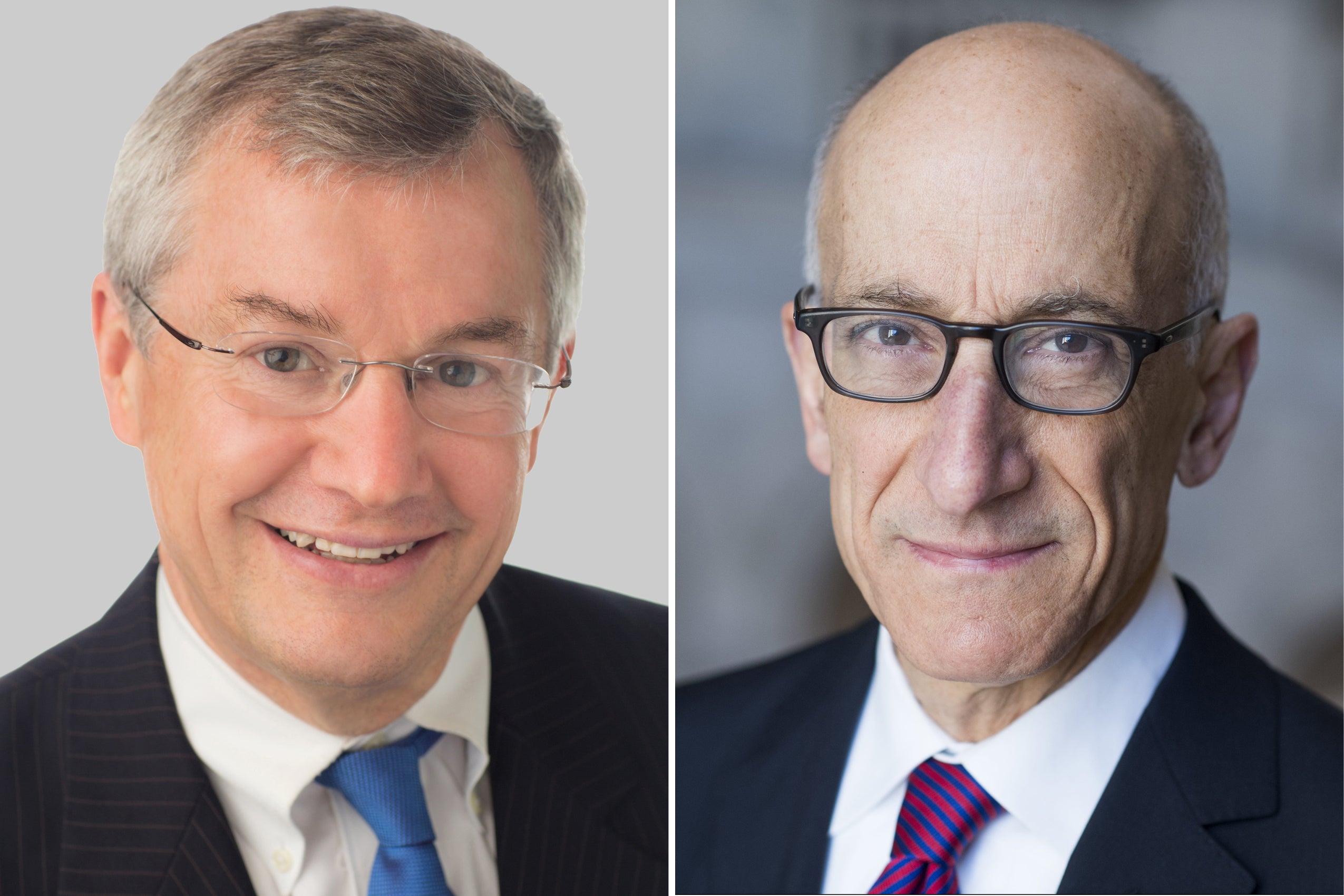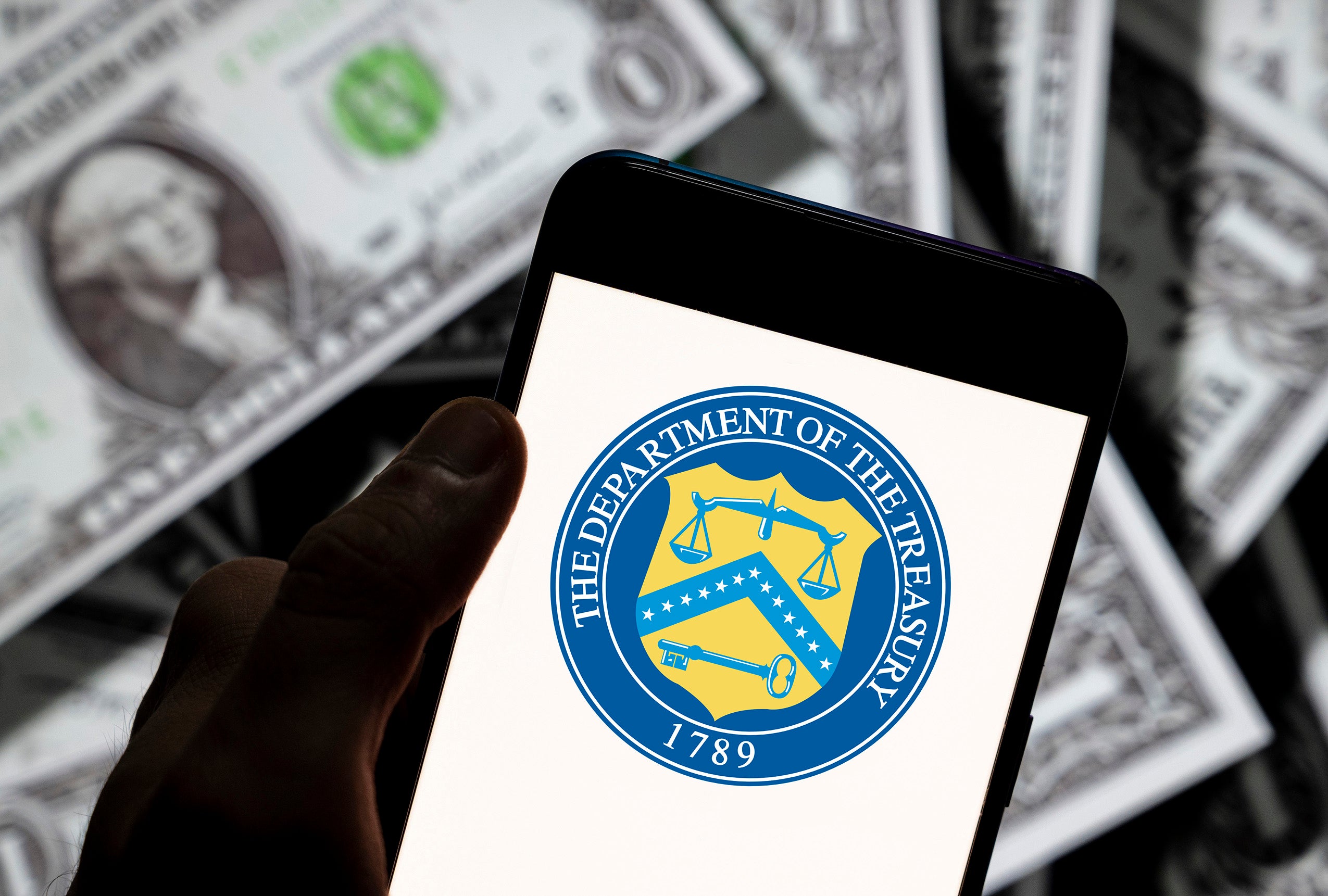The world is moving toward the adoption of digital currencies, and many believe this innovation — and in particular central bank digital currencies, or CBDCs — can increase access to financial services. But progress on a CBDC in the United States is likely to be slow and politically fraught. In the meantime, there is a quicker and easier method that the U.S. Treasury can use to expand banking access: digital Treasury accounts.
In a paper published by the Brookings Institution last month, Harvard Law School Professor Howell Jackson J.D./M.B.A. ’82 and Kennedy School research fellow Timothy G. Massad ’84 argue that this Treasury option could in the near future improve financial services for financially vulnerable households and also create a better mechanism for delivering government benefits.
We think the need to improve access to financial services is critical.
Timothy G. Massad ’84, former chair of the U.S. Commodity Futures Trading Commission
“We think the need to improve access to financial services is critical,” Massad said in a recent Zoom interview with Jackson. And, he said, Treasury accounts could solve some problems, particularly for the disadvantaged, who lack traditional bank accounts and often incur substantial fees for routine financial services.
Jackson has been teaching and writing in the field of financial regulation since he joined the Harvard Law faculty in 1989 and, over the years has consulted with the Treasury Department and many other regulatory bodies in the U.S. and abroad. Last semester, he taught a course at Harvard Law on Designing a Central Bank Digital Currency for the United States, and students in his FinTech class, in 2020, worked with a national nonprofit, Commonwealth, on a case study related to United Parcel Service’s efforts to create an emergency savings plan for 90,000 of its nonunion workers. Massad is also a nonresident fellow at Brookings and a former assistant secretary for Financial Stability at the U.S. Department of the Treasury as well as former chair of the Commodity Futures Trading Commission. While the two have long been aware of each other’s work, the current paper marks their first full collaboration.
“When I started writing a paper on regulation of cryptocurrencies, I asked Howell if he would review it, which he graciously agreed to do, and so we started talking about digital asset issues. Then I learned of his work on financial inclusion with Commonwealth [a Boston-based non-profit], which led us to this work.” Adds Jackson, “It’s been a pleasure working with Tim. He not only knows a tremendous amount about our financial system, but he also has a personal relationship with many folks who have been running Treasury programs over the past 20 years, so we were able to come up with a proposal that builds on what the Treasury already knows how to do.”

As Massad explains, more than five percent of American households don’t have a bank account and at least three times more have an account but make regular use of nonbank services, such as check cashing and money orders, which carry substantial fees. “These households use these other services because banking services are unavailable, too slow, or too expensive for them. If you live paycheck to paycheck and it takes three days to clear, you can’t pay your bills on time. And people with low balances in their bank accounts pay higher fees than those with more assets.” Overdraft charges, he says, have become especially profitable for banks, to the tune of $35 billion just last year.
The rollout of a full blown CBDC system might alleviate such problems, though both authors believe that such a system is several years away, if it is ever created. “But there is an easier way to address the needs of the underserved, and it can be implemented today,” says Massad. “That was the genesis of this paper, where Howell and I look at 20-30 years of the Treasury Department developing various kinds of electronic payment programs and savings products. We say that it would not be difficult for the Treasury to launch an expanded payments program without waiting the years that a CBDC would take.” Treasury accounts, he says, would be “essentially low-cost, no frills accounts with a mobile application. People could use them to receive government benefits of various kinds — like Social Security and SNAP [formerly, food stamp] payments — deposit other funds and make payments, all without the delays and fees that exist today.”
As Jackson points out, the recent implementation of pandemic relief payments demonstrates that the Treasury can work quickly and effectively. “The Treasury Department is well equipped to do something focused on financial access and the delivery of benefits. This could be done under statutory authority that the department already has, and it would build on what we’ve learned in the pandemic. So, we are trying to get this on the public agenda as something the Treasury could do today. It doesn’t require Congress to pass a statute, and it doesn’t require working through any new technical problems of the sort that a CBDC would necessarily entail.”
Jackson admits that the introduction of Treasury accounts would take a certain amount of political focus and commitment from the government. Yet, he notes that the timing is currently favorable in light of the Biden administration’s focus on underserved communities.
“As it turns out, the White House and Congress are also focused more broadly on digital assets. Just two weeks ago, the White House put out an executive order that is very expansive [the March 9 ‘Executive Order on Ensuring Responsible Development of Digital Assets’]. One objective of the order is to promote greater access to affordable financial services, and our paper provides a way to do that, without needing any new technology.”
One might expect that the big banks would push back against an anticipated loss of profits — but, they say, there is a fix for that as well.
Treasury accounts would be entryway accounts that would allow people to move into the private sector over time.
Harvard Law School Professor Howell Jackson J.D./M.B.A. ’82, an expert on financial regulation
“There might be industry opposition to a full blown CBDC for precisely that reason,” Jackson says. “But with Tim’s and my proposal we are focusing on a customer base that banks aren’t getting to. And we’ve written in off-ramps: Treasury accounts would be entryway accounts that would allow people to move into the private sector over time. So, we are structuring the proposal to help underserved households without disrupting incumbent firms.”
Adds Massad, “There may be some opposition from some banks, but our attitude is, they can compete. We’d be happy to see banks improve the pricing of their services, provide lower-cost accounts and improve the speed of clearing payments.”
Jackson also notes that the move toward electronic payments by the federal government has been developing for decades. “Treasury initiatives date back to the ’90s, so in some ways what we’re recommending is an extension of a long-standing trend. In the past five years, we’ve been in the midst of a payments revolution with a lot of interest in new technology. Alipay, Venmo, PayPal and a host of new Fintech are revolutionizing the payment space. In our proposal, Tim and I are bringing together these developments and connecting them up with the Treasury Department mission. Hopefully, our collaboration is a useful combination of my research interests and Tim’s considerable experience in public policy.”
